All issues

Predecessor
23.28
Displaying 1-8 of 8 articles from this issue
- |<
- <
- 1
- >
- >|
-
Article type: Cover
Pages Cover1-
Published: March 24, 1999
Released on J-STAGE: June 23, 2017
CONFERENCE PROCEEDINGS FREE ACCESSDownload PDF (15K) -
Article type: Index
Pages Toc1-
Published: March 24, 1999
Released on J-STAGE: June 23, 2017
CONFERENCE PROCEEDINGS FREE ACCESSDownload PDF (36K) -
Junichi KUBOKI, Takako Hashimoto, [in Japanese], [in Japanese], [in Ja ...Article type: Article
Session ID: BCS'99-11
Published: March 24, 1999
Released on J-STAGE: June 23, 2017
CONFERENCE PROCEEDINGS FREE ACCESSThis paper is described about method of making metadata of which skime consist of General Event List (GEL) we developed for TV production. The GEL is possible to make at same time the event happens, because the GEL is allow you to have event profile which define its attribute and event type operator wants, and allow you not to input duration when event starts. We can product many contents like program index which is developing for BS digital data broadcasting, web contents and video contents itself. The GEL has many benefit for broadcaster to reduce production cost and man power.View full abstractDownload PDF (760K) -
Takako HASHIMOTO, Yukari SHIROTA, Takeshi KIMURAArticle type: Article
Session ID: BCS'99-12
Published: March 24, 1999
Released on J-STAGE: June 23, 2017
CONFERENCE PROCEEDINGS FREE ACCESSThe Program Index is designed to provide information to assist selection and search of broadcasting programs. In the future, using the Program Index, TV viewers will be able to watch selected portions of a TV program. We have developed an experimental system that can dynamically edit a pro baseball broadcast program into a digest. The paper describes how the system selects key scenes by using objective circumstances information extracted from the Program Index and the viewer's taste information.View full abstractDownload PDF (726K) -
Yoshihiro YAMASHITA, Rumi Ohnishi, Atsushi ISHIZU, Toshiya MORI, Akihi ...Article type: Article
Session ID: BCS'99-13
Published: March 24, 1999
Released on J-STAGE: June 23, 2017
CONFERENCE PROCEEDINGS FREE ACCESSRecently, the digitization of broadcast services is being examined on a worldwide scale. It is expected that current broadcast services, of which audio and video information are the main constituents, will change to data broadcast services providing various additional information. The download technology has been developed which makes it possible to adapt to various TV program formats in the future by exchanging the software in the TV receiver without exchanging TV hardware components. In this article, we report on our software download technique using a simulation and describe the results and problems of this approach.View full abstractDownload PDF (711K) -
Akihiro TANAKA, Toshiya MORI, Yoshiyuki MIYABE, Yoshihiro YAMASHITA, R ...Article type: Article
Session ID: BCS'99-14
Published: March 24, 1999
Released on J-STAGE: June 23, 2017
CONFERENCE PROCEEDINGS FREE ACCESSThis paper describes a scenario for exchanging software components on a digital TV receiver, with a suitable architecture. We assumed an operation for downloading software for digiral broadcasting, and created a download scenario based on this. Accordingly, we derived two sets of results. One is the essential information which broadcast stations should transmit before transmitting the body of the download data. The other is an architecture adequate for the download of software components. Additionally, we introduce our experimental downloadable receiver system which works on ITRON - based real-time OS.View full abstractDownload PDF (625K) -
kenichiro Hayashi, Tomohiro Kimura, Akira Kisoda, Shigeru Soga, Sadash ...Article type: Article
Session ID: BCS'99-15
Published: March 24, 1999
Released on J-STAGE: June 23, 2017
CONFERENCE PROCEEDINGS FREE ACCESSWe have been developing key technologies for OFDM receiver. They are clock frequency and narrow band carrier frequency synchronization technique using with guard interval signal, wide band carrier frequency synchronization, phase noise cancellation and equalization technique using with pilot carrier signal. And we have developed OFDM modem which is based on tentative specification of digital terrestrial television broadcasting in Japan. In this paper, we summarize these technologies and report results of laboratory experiment using with the modem.View full abstractDownload PDF (611K) -
Article type: Appendix
Pages App1-
Published: March 24, 1999
Released on J-STAGE: June 23, 2017
CONFERENCE PROCEEDINGS FREE ACCESSDownload PDF (76K)
- |<
- <
- 1
- >
- >|